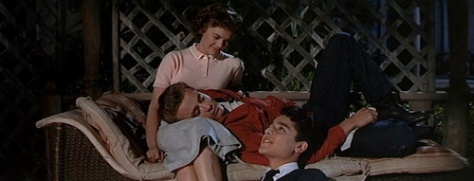Dennis Hartley
(Originally posted on Digby’s Hullabaloo on June 6, 2015)

In my 2009 review of Big Fan, which featured indie stalwart Kevin Corrigan, I lamented:
…when is somebody going to give this perennial second banana a starring role?
Maybe someone was listening. In Results, the latest offering from quirky writer-director Andrew Bujalski (Computer Chess), Corrigan receives equal star billing with his cohorts.
The ever-deadpan Corrigan is well-cast as Danny, a listless, divorced nebbish who has come into a sizable inheritance. He mopes around his spacious, minimally furnished home, seemingly bereft of ideas as to where or how to blow through his pile of money. Stumbling across a YouTube video posted by a local gym manager named Trevor (Guy Pearce), Danny decides that it’s time to whip his paunchy bod into shape. He sets up a meet with Trevor, informing him that his ultimate fitness goal is to “be able to take a punch”. Before Trevor can raise an eyebrow, Danny pulls out a wad of bills and tells him he’ll pay for a year’s worth of sessions in advance. Trevor promptly offers Danny the services of his top personal trainer, Kat (Cobie Smulders). Danny soon develops a serious crush on Kat (who unbeknownst to him, has a history with Trevor)…and hilarity ensues.
Well, perhaps “hilarity” is a bit of an exaggeration; since this is, after all, a Bujalski film. The director is credited (or blamed, depending on your tolerance for the genre) with sparking the “mumblecore” movement in indie film. Not to infer that the actors “mumble” their lines, per se; but referring to a low-key, episodic narrative that shoots along at the speed of day-to-day, humdrum existence (OK…some might call it “boring”).
I’m sure that stalwart fans of Woody Allen will recognize these characters, particularly the neurotic Trevor and Kat (especially the manner in which their egos shadow-box whilst they continue to dance around the fact that they still harbor strong feelings for each other). In a fashion, Corrigan gets short-changed yet again; he’s all but banished from the deflating third act, which meanders mightily as Trevor and Kat hit the road to propose a business partnership with a successful competitor (played with Euro-trashy aplomb by an unrecognizable Anthony Michael Hall). While it’s a somewhat disappointing follow-up to Computer Chess, when compared to the formulaic rom-coms churned out by the Hollywood gristmill…Results is a breath of fresh (-ish) air.









